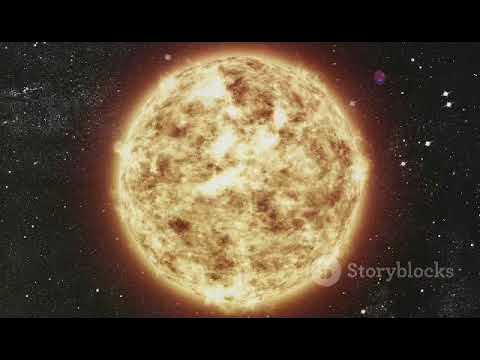Neil deGrasse Tyson: Are We Alone in The Universe?
Summary
TLDRThis script explores the cosmic origins of the elements that compose life, highlighting that stars are the manufacturers of these elements. It discusses the vastness of the universe, with estimates suggesting up to two trillion galaxies, each with billions of stars and potentially even more planets. The narrative ponders the likelihood of extraterrestrial life, considering the chemical similarities between the ingredients of life and the universe's most abundant elements. It also touches on the search for life beyond Earth, the role of the James Webb Space Telescope, and the possibility of detecting atmospheric signs of life on exoplanets. The script concludes with a philosophical reflection on the potential existence of advanced alien civilizations and the implications for our understanding of life's origins.
Takeaways
- 🌟 It took modern astrophysics to determine the origin of the chemical elements, revealing that stars manufacture and scatter them through explosions.
- 🌌 The observable universe may contain as many as two trillion galaxies, with each galaxy potentially hosting billions of stars and planets.
- 🌍 The elements that make up life, such as carbon, oxygen, nitrogen, and hydrogen, are abundant throughout the universe, making life potentially inevitable.
- 🔭 Thousands of exoplanets have been confirmed, and astronomers consider the possibility of finding extraterrestrial life, though it may not need Earth-like conditions.
- 🛰️ The James Webb Space Telescope might detect atmospheric signs of life on exoplanets, such as oxygen, carbon dioxide, or methane.
- 👽 NASA's SETI program is actively searching for extraterrestrial intelligence, including looking for atmospheric pollution or radio signals that might indicate advanced civilizations.
- 🌱 Extremophile microorganisms are the most likely form of life to be discovered on other planets or moons in our solar system, such as Mars or Titan.
- 🧠 The cognitive difference between humans and chimps, with only a 2% DNA difference, raises the possibility that advanced extraterrestrial beings could be far more intelligent than humans.
- 🪐 The discovery of life elsewhere could fundamentally alter our understanding of life’s origins and the potential for intelligent civilizations beyond Earth.
- 🤔 Whether we are alone or not in the universe, both possibilities are equally profound and terrifying, as noted by Arthur C. Clarke.
Q & A
What role do stars play in the creation of chemical elements?
-Stars are the primary manufacturers of the elements in the periodic table. They create these elements in their cores, and when they explode, they scatter these elements across the galaxy, enriching the gas clouds that form new stars and potentially planets and life.
How many galaxies are estimated to be in the observable universe?
-Current estimates suggest there may be as many as two trillion galaxies in the observable universe.
What is the significance of the number of stars and planets in the Milky Way in relation to the possibility of life?
-The Milky Way contains 400 billion stars and at least that many planets, suggesting a vast number of potential habitats for life. This has profound implications for the likelihood of life existing elsewhere in the universe.
What are the basic requirements for life to exist according to the script?
-For life to exist, the first requirement is a universe with suitable molecular building blocks, such as those found in stars.
How does the composition of the human body relate to the most abundant elements in the universe?
-The human body is composed largely of elements that are also abundant in the universe, such as hydrogen, oxygen, carbon, and nitrogen, which are the most chemically fertile elements for life as we know it.
What is the significance of carbon in the context of life in the universe?
-Carbon is the most chemically fertile element, capable of forming a vast array of molecules, making it a likely candidate for the basis of life in the universe.
What is the current status of the search for extraterrestrial life?
-The search for extraterrestrial life is ongoing, with scientists using our understanding of Earth's extreme environments and other solar system worlds to explore the potential for life on other planets and moons.
How does the James Webb Space Telescope contribute to the search for life on exoplanets?
-The James Webb Space Telescope could provide the first glimpses of the mix of gases in the atmospheres of Earth-sized exoplanets, potentially detecting signs of an atmosphere conducive to life.
What is SETI and what does it aim to do?
-SETI (Search for Extraterrestrial Intelligence) is a program that conducts research addressing questions concerning the existence, evolution, and prevalence of life in the universe. It also tries to detect evidence of technological civilizations that may exist elsewhere in the universe.
What are the potential implications if intelligent life is discovered elsewhere in the universe?
-The discovery of intelligent life elsewhere would have profound implications for our understanding of the origins of life and our place in the universe, potentially revealing advanced civilizations or life forms with capabilities beyond our current comprehension.
How does the diversity of life on Earth inform our understanding of potential life on other planets?
-The diversity of life on Earth and the various environments in which it exists can teach us about how life might have started and evolved on other planets, suggesting that life elsewhere could develop in different ways than it has on Earth.
Outlines

このセクションは有料ユーザー限定です。 アクセスするには、アップグレードをお願いします。
今すぐアップグレードMindmap

このセクションは有料ユーザー限定です。 アクセスするには、アップグレードをお願いします。
今すぐアップグレードKeywords

このセクションは有料ユーザー限定です。 アクセスするには、アップグレードをお願いします。
今すぐアップグレードHighlights

このセクションは有料ユーザー限定です。 アクセスするには、アップグレードをお願いします。
今すぐアップグレードTranscripts

このセクションは有料ユーザー限定です。 アクセスするには、アップグレードをお願いします。
今すぐアップグレード5.0 / 5 (0 votes)






